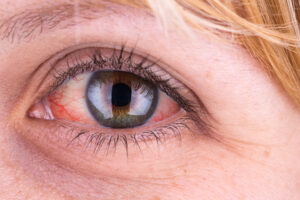Symptoms
Eye diseases may appear with a wide range of signs and symptoms of varying severity, which may also occur as a result of sudden causes, such as an accident or trauma.
In general, we can classify ophthalmological symptoms into two large groups: those which affect the eyelids and the eye structures themselves and those which concern visual function. Among the former, we find, for example, redness, itching, pain, tearing or the sensation of a foreign body in the eye. On the other hand, the symptoms related to the eye’s function can affect vision in the form of spots, flashes, floaters, etc., as well as make us see double, blurred, distorted or deformed images, among others.
How to associate eye symptoms with a disease
Associating eye symptoms with a specific pathology is not always easy, as the same signs may correspond to different ailments, whereas the same disease may not cause exactly the same symptoms in all patients. For this reason, it is essential that you see a specialist to obtain an accurate diagnosis, evaluating the symptoms as a whole and in relation to your medical history and other circumstances that may be related to your vision problems.
You should also bear in mind that some eye symptoms appear immediately and others appear as the ophthalmological disease progresses, with some “silent” eye pathologies not giving obvious warning signs until advanced stages.
Therefore, even if you do not notice anything or find them slightly uncomfortable, it is important that you do not neglect your check-ups with the ophthalmologist: especially in the case of children, as well as from the age of 35-40 and, above all, 60, we recommend not delaying or skipping your scheduled periodic check-ups. Furthermore, remember that you can always go to the Miranza clinics’ ophthalmological emergency services in the event of any anomaly or symptoms that persist or worsen.












